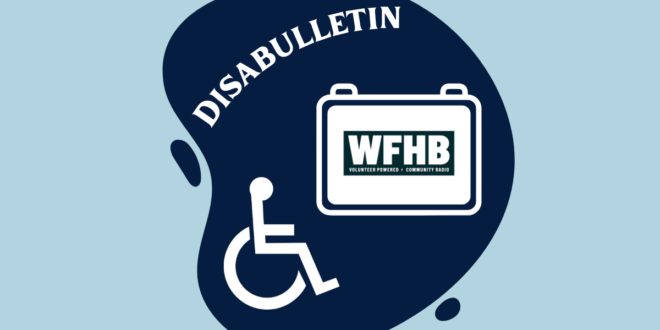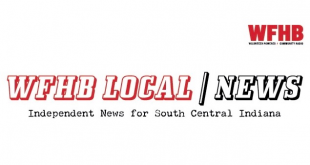Podcast: Play in new window | Download (Duration: 26:22 — 21.1MB)
(Fade into Teletype Machine sound)
ABE SHAPIRO: Revolutionary devices help persons who are blind eclipse non- accessibility and an examination of Bloomington’s first choir for individuals disabled and non disabled.
(DISABULLETIN theme plays)
SHAPIRO:Good evening, I’m Abe Shapiro. And this is Disabulletin, where we cover the top stories impacting the disability community across the country and around the world.
SHAPIRO:Good evening, in national news, the solar eclipse has come and gone. But thanks to a device created by students at Harvard University, individuals across the country who are blind, were also able to experience the phenomena. Thanks to a five person team in Harvard University’s Department of Astronomy, a device known as the light Sun box has transformed how members of the blind community experience a solar eclipse across the globe.
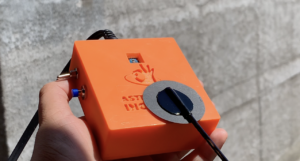

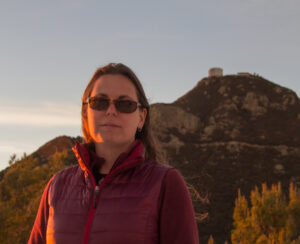
Image courtesy of:Lightsound Project.org
Image Description: To the left is a photo of the Lightsound Box, an orange rectangle with a black circle with a thin black line atop it jutting out of view, all of which is surrounded by a gray ring, on the bottom of the orange box. Two metallic knobs are on the device’s left, with the device held by a hand. In the center is a picture of Wanda Diaz Merced. On the right is a shot of Harvard Astronomy Lab Manager Allyson Bieryla.
The team is led by astronomy lab department manager Allyson Bieryla, and Wanda Diaz-Merced, a world renowned leader in transforming data gathered from space into audio. When a change in sunlight is detected in the area where the device is placed, a sensor inside it collects data after which such data is converted into specific zones previously programmed. The sounds will now be showcased courtesy of the Light Zone Project website. The following Theramin-like note is heard for high sunlight;
(Theramin Sound Plays),
SHAPIRO:An oboe like ring for moderate light;
(Oboe Sound Plays)
SHAPIRO:And an abrupt clicking representing little to no light.
(CLICKING NOISE)
SHAPIRO:Almost similar to a lawnmower. With three devices prepared in time for the 2017 solar eclipse, two in Kentucky and one in Wyoming, over 900 Light sound boxes were distributed across countries such as the United States, Mexico, Guatemala, Colombia, and Puerto Rico in time for this year’s solar eclipse, according to the light sound projects website.
SHAPIRO:Here in Indiana, students at the State School for the Blind and Visually Impaired have previously been able to experience solar eclipses through a machine known as a “cadence tablet” created by the Lafayette based assistive device company tactile engineering. This device has revolutionized how students and persons who are blind learn braille, send messages, play games, monitor sports, or collect data for projects by creating tactile images. In other words by using braille dots to help persons who are blind use touch to visualize something.

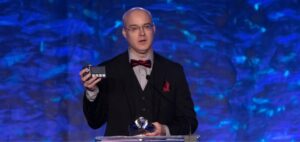
Images courtesy of: Tactile Engineering.org and Techpoint.org
Image description: From left to right, a grey rectangle with four rectangular buttons jutting out and a circular button in the center. Four dash-shaped buttons are organized horizontally, a field of holes featuring some white dots raised. Below the field, four white squares are organized from left to right, with a white rectangle on the lower front half of the device. To the right of the machine image, a shot of Tacile Engineering CEO David Schlepenbach
SHAPIRO: In a comment to Disabulletin regarding the device’s use in the eclipse, tactile engineering CEO David schleppenbach explained “the device creates a tactile image made of dots that move up and down. These images are made via the connection of a video image from a telescope of the eclipse data which is then relayed to the machine. The machine’s dots then move according to the movement of the moon as it blocks the sun.” According to Schleppbach, while the device is currently used in “seven states and three countries”, he says the company is hoping to expand to all 50 states along with other countries across the world. Ultimately, Schleppenbach says the company seeks to help “anyone with a visual impairment get a cadence.”
SHAPIRO:Finally, we examine Bloomington’s first choir for individuals of all abilities. But first we pause for station identification.
SHAPIRO:You’re listening to Disabulletin here on WFHB 91.3 Bloomington, Indiana. Our next story in a moment
(Sound of crowds chattering)
SHAPIRO: It’s a late Wednesday afternoon and the sun is beginning to set in Bloomington. But the curtain is rising for the All Abilities choir, which has gathered for its weekly practice in the Monroe County Library auditorium. Originally founded within Lifedesigns one of Bloomington’s residential programs for individuals with disabilities, the choir is the first of its kind in the city. Founders Jake May and Kristen King explain how the choir began.
JAKE MAY:We started this back in 2018 with Kristen King, who is now working for Stonebelt. But we started this because we wanted to have a choir for anybody who wanted to to in Monroe County to be a part of
KRISTEN KING:Jake came to me and he said, “Kristen, I want to be a choir director.” We do what’s called person-centered planning where we talk to people about out what they want from life, what goals do they see, and let them take an active part of their planning for their life. And we talk about what are what are your “North Star goals.” And Jake said “my North Star goal is to be a choir director” because he is very much in this music scene. He loves to sing and he loves to perform, and he likes to watch performances. And he said, “Kristen, do you think we could start a choir?” And I said, “I think you can do anything you want to do as long as you’re willing to put the work in.” And he said, “Okay, let’s try it.” And I said, “let’s try it”. We set a date and a time to have like a call out meeting to see if anybody was interested in this group activity being offered to the community. There’s a lot of choirs, there’s a lot of different things going on in Bloomington. And so our idea was:let’s get people who love music and want to share that music with each other together”. So we did a call out meeting and I think the first call out meeting we had about 25 people there and that’s when we knew people want to do this.
MAY (speaking to choir): We have got the shirts ordered for the choir
AARON SMITH: We’re just waiting on…(fading)
SHAPIRO:With shoulders back and heads proud, May and co-founder Aaron Smith mount the stage of the auditorium and provide some brief updates.
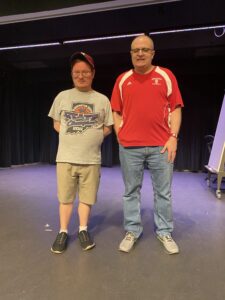
Image description: A shot of Jake May and to his right stands Aaron Smith.
MAY:And we will also be singing, we are possibly going to be singing at an IU [INDIANA UNIVERSITY] Men’s soccer games this season.
SHAPIRO:With updates completed the choir launches into practice.
(CHOIR SINGING NATIONAL ANTHEM)
SHAPIRO:Although only six years old, the choir has already performed in some rather exciting venues. Again, May and Smith.
MAY: Our first gig we did was when we sang-
SMITH: IU Women’s basketball.
MAY:IU Women’s Basketball game, back in 2008, when we did it. When we first started, we had a lot of members nervous about it. But in the end, we had a good time and then we got to sing at a Pacers game in Indy. Then we got to perform at an Autism Rock And Rolls event, the first autism Gala. We sang at that and then came back for the second Gala. And we’re hoping that we do some more performances with the gala for autism in the future.
KING:We’ve performed [at] places like women’s IU basketball games, singing the national anthem, local nonprofit galas, community events for the United Way we’ve done performances, and one of our biggest performances to date was when we got to sing the national anthem at Autism Acceptance Night for the Pacers. And so now, we’re all friends who love to share music and sing and the foundation of what we created the choir, which was that everyone gets a voice, is still going.
(FADE INTO CHOIR SINGING END OF NATIONAL ANTHEM)
SHAPIRO:Jake May and co-founder Eric Smith talked about how the choir keeps itself going.
MAY:We do have performances come up, like the people who put on the event call us, once a month. And they arrange for us to do their performances. And then we decide what songs we’re thinking and practice.
SHAPIRO:So you guys get different calls essentially?
SMITH:Yeah
SHAPIRO: So people reach out to you guys. Now, does that come from word of mouth? Or how do you guys market?
MAY: It’s usually like an email or a call from somebody.
SMITH:Yeah, that happens.
SMITH:Just recently, we did a joint practice with the IU Singing Hoosiers.
MAY: Yes, we did. And that was back in April of 2023. We did that.
SMITH:And…
MAY: And they actually came here and sang with us right here in the auditorium.
SHAPIRO: First collaboration?
MAY:Yes, first collaboration we ever did with the Singing Hoosiers. Yeah, it was a very fun experience. But they reached out to us, Chris Albanese, the director of the Singing Hoosiers reached out to us. So we combined with that and did a joint email.
SMITH:And we’re restarting that?
MAY:Yeah, we’re restarting it right now. So we’re looking at doing that again this year. So that’s our next big fundraiser event we’re doing. And they’re actually a sponsor with us this year too.
KING:Sometimes, Jake, myself, Aaron, or even a choir member will be talking about what we’re doing or somebody will know that we’re part of it, and they’ll reach out to us directly. But any of the members of the choir can bring that information back to us whether it’s through email, word of mouth. I don’t even mind if somebody tells me somebody wants to talk to me, i’ll reach out to them. So we are looking for those opportunities. If somebody has an event that they would like us to come sing a couple songs at, we would love the opportunity. We do really well singing the national anthem, I would say that’s our gem. But we do have a lot of other songs that we practice that we love to perform. Of all different genres:Country pop, Broadway. And certainly if anybody is looking for somebody to perform and has a specific request, as far as, like they want this kind of song, we will try, we will try our best to find a song that the choir feels comfortable learning. And it’s a little bit of a process for us and we need some time.
SHAPIRO:Recently, that time has been spent working on a song that may be familiar to fans of the late songwriter John Denver.
(FADE INTO CHOIR SINGING TAKE ME HOME COUNTRY ROADS)
SHAPIRO:Choir founder Kristen King elaborates on what the choir plans on doing for future concerts.
KING:We are working on doing some more visuals and maybe even doing some drumming and some bells. And we have a song that we do sign language on. We just do a little bit of everything and we’re excited to try new things. We also have a member that loves to play the piano and is going to accompany us on the piano for a song. So really, [the] sky’s the limit, I will never say no, we will always try it. And that’s our motto. We’re going to keep trying and we’re going to keep trying and find a way. But if it doesn’t work, we’re going to just keep going.
(FADE INTO CHOIR SINGING TAKE ME HOME COUNTRY ROADS, THEN FADE OUT)
SHAPIRO:For many members, the choir is a way for them to express themselves musically. Choir member Katie Adams explains how membership impacts her and suggests how the choir can expand its reach.
KATIE ADAMS:Well, I love to sing. And I don’t really get a lot of performing arts opportunities that aren’t super long hours. I think it [the choir] gives people a performing arts opportunity. I just really wish there was more variety in the sounds we sang. But I mean, I think that we are going to get some more variety.

Image Description: From left to right:Choir members Shelly Hackett and Crystal
SHAPIRO:For others, being part of the group provides them with teammates to help if challenges are encountered. Choir member Crystal explains:
CRYSTAL:When I sing, because…I couldn’t remember all the…when I couldn’t remember all the words…
SHAPIRO:So it feels good to have other team teammates help you out?
CRYSTAL:Uh-huh.
SHAPIRO: Still for others, it’s all about making memories that will last a lifetime. Choir member Shelley Hackett explains:
HACKETT’S AIDE:Where have we sung before?
CHOIR MEMBER SHELLEY HACKETT: I think, I remember. They served food there too. Yeah, we did a Chocolate Fest.
SHAPIRO:What’d you guys sing there?
CRYSTAL:Well, it was a while ago.
HACKETT:You’ve got a friend in me, [from] Toy Story. [AND] Mickey Mouse Club too.
SHAPIRO:Kristen King explains how the choir is different from others in town, and how it seeks to take a progressive approach towards rethinking social perception towards disability,
KING: Everyone is allowed to suggest songs, everyone’s allowed to suggest performances. Everybody gets to share in this love, that we all have with one another. And you don’t have to have disabilities to be part of it. You just have to love music and want to participate in something with other people. They’ve [the city of Bloomington] had choir groups and classes, but nothing that really took the choir to a next level of being a community choir that’s not related to just one service provider or one entity. And we’re really proud of the fact that this is a community choir. You don’t have to be affiliated with LifeDesigns or other service providers or even StoneBelt to participate. Do a lot of people from Stone Belt and Life Designs and other service providers that have disabilities participate in the choir? Sure. But it’s a community in itself and word of mouth spreads. And people want to be part of something that gets them excited, happy, giving them that meaningful connection. And so we have approximately 30 members at this time, with and without all various kinds of disabilities, including a majority I would say of of our members identify on the Autism Spectrum. But we have people with all kinds of disabilities and we try to give everyone a chance to shine and share the gifts that they have with how they’ve connected with music and their disability. For instance, we have a few people that like to do drumming as part of the music and participating in the choir, or using sign language, or teaching others. So, we’ve even implemented a chance for everyone to lead warm ups.
SMITH: (SINGING) I LOVE TO SING!
CHOIR MEMBERS:(SINGING) I LOVE TO SING!
SHAPIRO: But what does the All Abilities choir mean to the city of Bloomington? Again, Kristen king,
KING:Its those connections to your community and your connections to other people who like the same things as you. And sometimes that’s really difficult for us, whether we have disabilities or not, to find the people and the places and the things that we connect with, that give us this feeling of happiness and contentment to life, and feeling a part of, something bigger than ourselves. So, especially in the disability field, people with disabilities have been fighting to be independent. For so long. Now, we’ve come a long way. And I want to celebrate that, I want to celebrate all of the wonderful things that have happened and the changes that have occurred. But if we’re talking in this century, people with disabilities were sent to live in institutions. If you had a disability, you were deemed that you shouldn’t be around society, and you should be put somewhere, and just kept safe away from everyone. But what we’ve learned over time is that is not healthy and good for people in their quality of life. And we do know now, we know more now. So I always say, “we learn and grow and change. And we’re going to keep growing and learning and changing.” Because we know that people with disabilities have a lot to offer our community. They are often the best employees. They’re reliable. They’re capable, they’re willing to learn. And what that makes me think is, we have people that are willing to learn and are dependable, why are we not helping them get to do whatever they want to do? Even starting a choir, being a choir director. Because what I can tell you is through this experience with Jake and with Aaron, they pretty much do it on their own. I’m here as a support, they can ask me questions and do those things. And I don’t mind helping connect them with people. But they’re the ones typing up the roster sheet and sending out emails to the choir members and running practice and running the PowerPoints and the zooms. All the things that people still think they are incapable of doing, they’re doing so much better than able bodied people. And it is amazing. The growth that I’ve even seen in Jake and Aaron, their confidence, their leadership skills, their social skills with their peers, just doing day to day things that we love can help us grow in that way. And I’m just so proud of the people that they are. When I tell you, Aaron is always prepared. He comes to practice, he has all the music and the lyrics ready to pass out to people. He’s taking attendance, he creates all the certificates. And again, I know, people don’t believe me when I say they are capable, they can do this. They can be leaders, they can contribute to their community. And they should be able to dream a goal and have that dignity of risk to fail. That’s a right all humans have. So I didn’t mind when Jake came to me five years ago, and said he had a dream of being a choir director, can we start a choir? Because the chances are with a lot of things we start, it could fail. But that is his right, to make that choice to have the dignity to try something that he may not succeed at. Fortunately and amazingly, and I’m not shocked because we have a wonderful community here in Bloomington and surrounding areas. And we’re very, very lucky to have a lot of the disability resources that we have. But understanding that not every community has what we have here. And that’s why this is important because somebody has to do it first. Somebody has to give somebody the chance to prove they can do it, for other people to believe that they can do it. I believe anybody can do it. I believe that the All-Abilities choir is important. I feel like the work that people with disabilities do in the community, in their groups in their churches and faith congregations, in their families. It all matters. We just want a chance to share our love of music with everybody. So that’s what I see, I see us still growing. We’re still getting members, we still have upcoming shows. We are getting ready to sing the national anthem at an IU baseball game on Saturday, April 27 at 2 pm. And we’re very excited about this opportunity just to show people what we can do and what our group is about and just show awareness and acceptance of people with autism and disabilities, that we can do this, and we can be a part of the community too.
SHAPIRO: Founders May and Smith explain what the future holds for the choir
SMITH:When we started was through Life Designs. But here within the last…
MAY:Few months
SMITH:…few months, we’re getting ready to be our own entity. I’m working with Kristen to start a nonprofit booster. We’ve been fundraising for the last…
MAY:Yes, we have.
SMITH:…several weeks. We still don’t have a count but we had an area arts grant, we got equipment from that.
MAY:And then we donate our equipment who to Autism Rocks And Rolls.
SMITH:They’re one of our biggest supporters. The equipment that we got from them, from from the money they donated to us. We got rainbows and clouds for one of our songs, Rainbow connection
MAY:Yep.
SMITH:And then bells.
MAY:Yes.Yeah, we are getting bells for…
SMITH: We got bells…that was through the money we got from Autism Rocks and Rolls and also rainbows.
SHAPIRO:And with the theme of connections as a core principle of the choir’s mission, and rainbows serving as backdrop material for the group, it was only fitting then that practice end with a song that promotes the same theme and set design. That song being The Rainbow Connection.
(FADE INTO CHOIR SINGING RAINBOW CONNECTION)
(CHOIR SINGING RAINBOW CONNECTION)
SHAPIRO:With the moving refrains of the song now faded, founders May and Smith provide closing remarks that brought the message of this musical unit full circle.
MAY: .Everytime I see you guys. it always puts a smile on my face to see all of you show up. Because If you guys never show up to do that. I can’t be be more happy about this. So I want to thank you guys from the bottom my heart for coming out and making me happy every week.
SMITH:And also, this is this is our fifth year as a choir.
MAY:Yeah.
SMITH: WOO! (CHOIR APPLAUSE)
SHAPIRO:Sitting stage right a few minutes after the end of rehearsal, Jake and Aaron explain what the main takeaway of today’s rehearsal is.
MAY:I think the big takeaway from it is we always would like to get more members to join. We always want to get more members to join us. And we always want to get invited into more performances.
SMITH:And that’s the big thing we’re needing right now. Because, one of these days we’ll be doing our first live musical and we need members to put that on.
SHAPIRO:Disabulletin is created and produced by me, Abe Shapiro. Our theme music is Baseball Is More Than A Game by the George Romanis Sound. Abe Shapiro, WFHB news, live and learn.
To learn more about today’s devices, please visit https://astrolab.fas.harvard.edu/LightSound.html and https://www.tactile-engineering.com
 WFHB Bloomington Community Radio
WFHB Bloomington Community Radio
